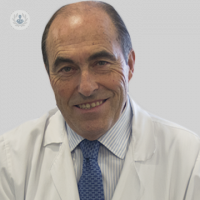Pituitary tumors: most are benign
Written by:The pituitary gland is an endocrine hormone generates most of the human body and is housed in the base of the cranial cavity within a bone structure known as "sella" due to its shape. Anatomically, it is very close to the optic nerves.
pituitary tumors
Most pituitary tumors are benign and it is unknown because they appear. Mainly, there are two types of pituitary tumors:
Producers hormone, also known as secretory. Its symptoms are related to the elevation of the type of hormone that is produced, ie, secrete more of hormone necessary and therefore the patient reports hormonal changes before noticing visual field loss, which is more common in non producers.
Within the secretory, the specialists distinguish between:
- Amenorrhea-galactorrhea syndrome, more common in women. It is characterized by absence of rule, milk secretion and increase the hormone prolactin. Occurs in men decreased libido.
- Acromegaly. Produce excess growth hormone. These are patients who begin to notice enlarged hands, feet, nose and jaw. Some have to change the number of shoe and do not enter the ring finger always. Growth hormone is increased in analytics.
- Cushing syndrome, common in women. Clinically no increased cortisol in blood and urine, the face becomes flushed and there is excess fat in the neck and especially in the abdomen with stretch marks such as pregnant. increased blood pressure is also produced.
And the non - producing hormone, also known as secretory. Reach large sizes because they have not caused hormonal alterations, reaching compress the optic nerves, so they usually start with visual field loss can lead to blindness if not treated.

Diagnosis of pituitary tumors
Diagnosis is achieved with good clinical history, hormonal analysis, conducting visual field and, importantly, cranial MRI (which will give us the size of the lesion and anatomical commitments).
Treatment of pituitary tumors
Initially, treatment may be with medication intake, which produce prolactin elevation, and in other cases, usually surgery.
Surgical treatment is through the nostrils, reaching sinus, skull base and finally to the pituitary gland and the tumor. In recent years, practiced by endoscopy, with the help of ENT doctors and hospital stay is reduced to 2-4 days.
When they are extremely large and can not get removed nasally must open the skull.
When a tumor is radiosurgery rest helps control growth



